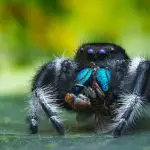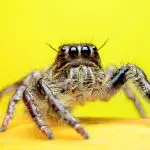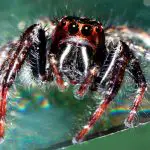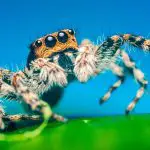Last updated on February 8th, 2023 at 02:09 pm
The native spiders of Texas include a diverse range of species, some of which are medically significant – though bites are rare. Keep reading to learn more…
The following article provides information about some of the native spiders of Texas. Learn about the Black Widows, Gray Wall Jumpers, Yellow Garden Orb Weavers, and American Grass Spiders. These spiders can be great to have around for bug control, so it’s good to learn more about them and give them the respect they deserve. Listed below are the most common spiders in Texas.
Before getting into it, let’s remind ourselves of a few important facts about spiders:
- They don’t want to bite us – give them space
- Don’t handle them if you haven’t positively ID’d them
- Wearing gloves when gardening or working outdoors can prevent most spider bites
- Spiders are our main pest control! If you aren’t a spider fan, do try to not to harm them all the same
Black Widows
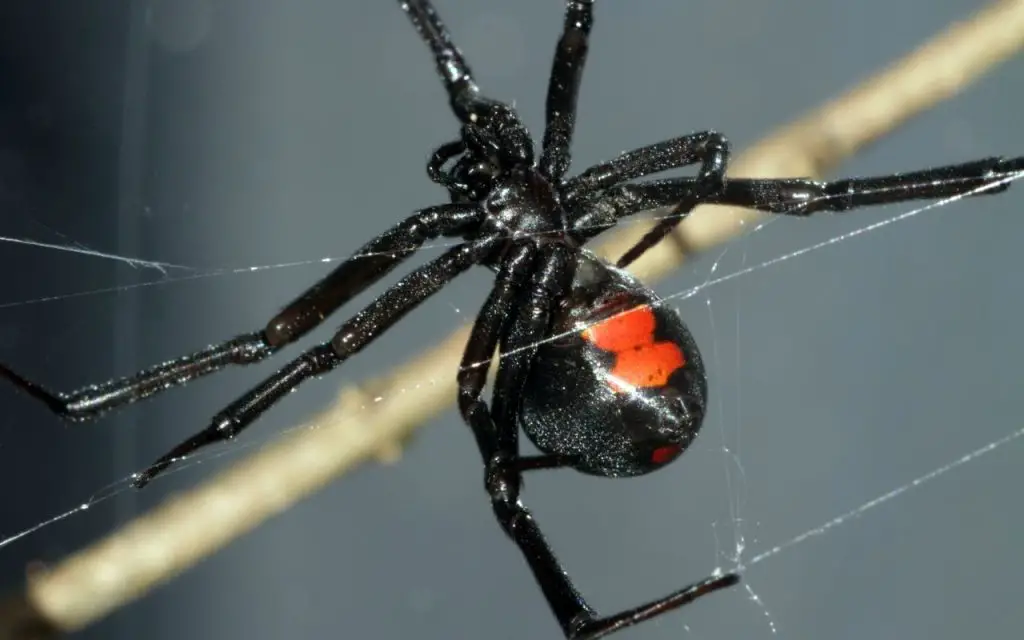
If you live in Texas and want to be safe, you should know about Black Widows, one of the most famous native spiders. The bite from these spiders is initially similar to that of a bee, but it is more serious because it can cause necrosis lesions in the area where it has bitten and generalised sickness after a few hours.
A female black widow spider has a globular abdomen and a red hourglass-shaped marking on the underside. Contrary to popular belief, Black Widow spiders only bite when disturbed or to defend their eggs.They are nocturnal spiders that live in dark places.
While the black widow is feared by many, it is a beneficial predator in Texas. This spider makes a great pest-control agent because it lives in shady areas. Moreover, black widows are very attractive as they have a distinctive hourglass mark on their lower abdomen.
Male Black Widow spiders are smaller than females, and have a distinct black and white coloration.
Gray Wall Jumpers
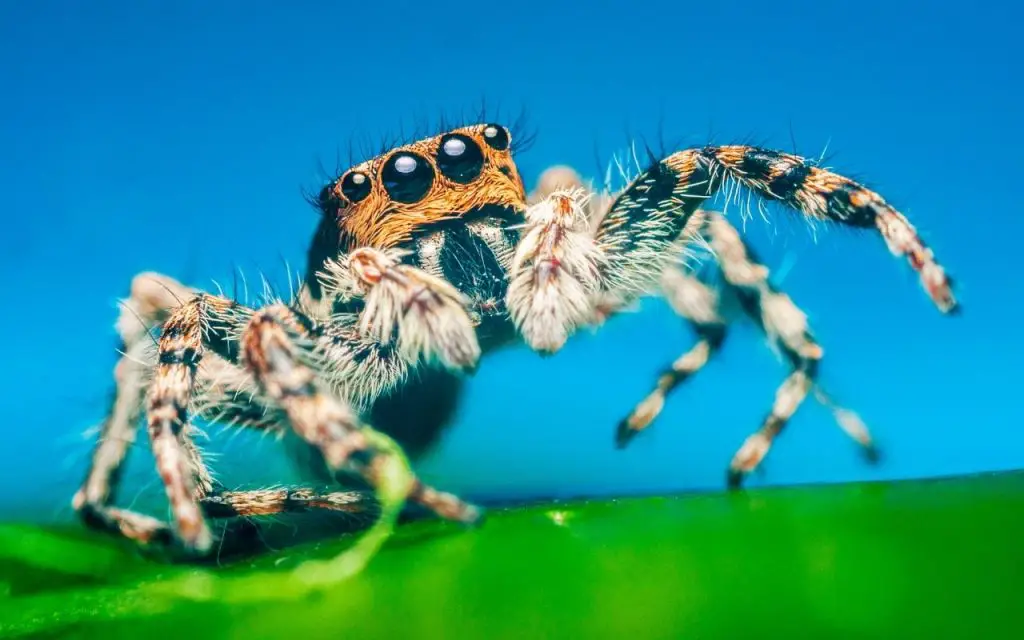
These colorful spiders are not native to Texas, but they do inhabit the area. They are a member of the family Salticidae. They are usually found in southern California, Texas, and Florida. They are not a threat to humans.
However, they are an invasive species in their non-native environment. Read on to learn more about this interesting spider.
The Gray Wall Jumper Spider is a light-tan to light gray color with tufts of black bristles near its eyes. They can reach a length of nine millimeters, and males are smaller than females. They have black longitudinal dorsal stripes and a brownish-white stripe on their abdomen.
The Gray Wall Jumper is a cosmopolitan species, found in Florida, Texas, California, and Paraguay. They are commonly seen in man-made structures. Their silken egg cases can be purse-like. The female lays 25 to 40 eggs in the case, which she guards until they hatch.
Yellow Garden Orb Weavers
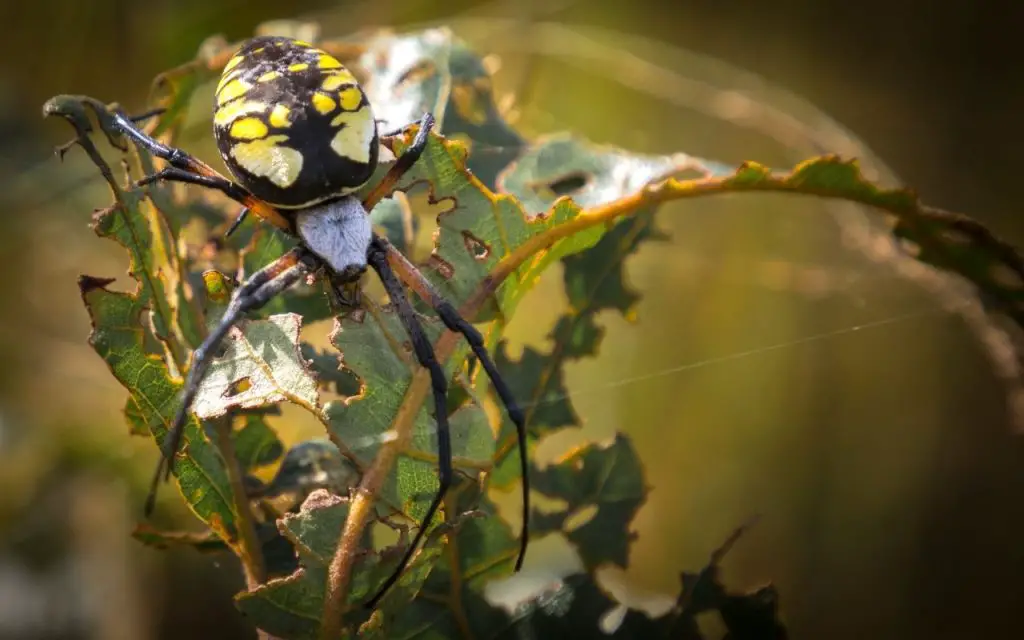
Orb Weavers are native to Texas and can be found living in tall grasses and quiet, protected areas in homes. Other common names include the Yellow Garden Spider and Black and Yellow Argiope.
This spider spins its web on a tree or bushes and sits in the center, facing downward. Its “signal line” allows it to monitor its web for prey and emerge from the sticky web when it sees it. The yellow-colored spider is a flying pest control specialist.
The female yellow garden spiders are aggressive, and will bite larger objects when threatened. They are one of the most common spiders in Texas, and can be found in gardens and yards. They are also native to other parts of the United States and are one of the mostly coloured native species.
These spiders rarely enter buildings, and their venom is not harmful to humans. The Yellow Garden Orb Weaver can be easily identified by its dorsal markings on the carapace.
American Grass Spiders
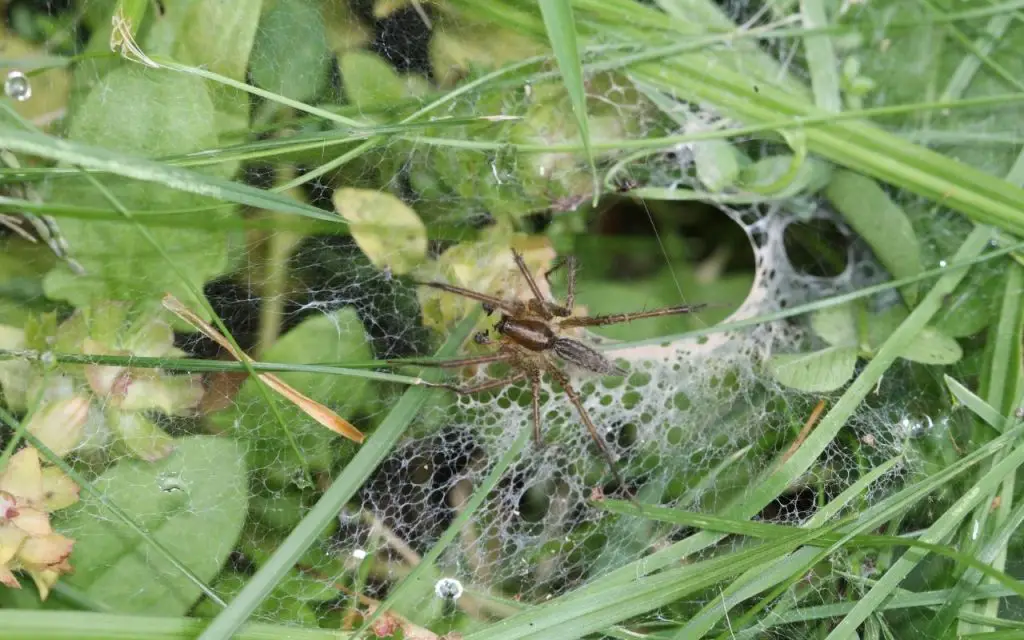
This species of spider lives in the Texas Hill Country. Its distinctive orange abdomen and long skinny legs help it weave its web in between grass stems. Its web is not sticky or glue-like and it is able to hide itself from human detection.
If you find an American Grass Spider in your home, don’t worry! This species is perfectly harmless to humans. Here are some facts about this spider.
The American Grass Spider is a native species of Texas. It is similar to the wolf spider or the hobo spider, and can be mistaken for either. Unlike these spiders, they do not often come into contact humans, but will bite if threatened.
Unlike some other species, grass spiders have very little venom and can rarely if ever cause infections in humans if they bite.
While most spiders have venom, the venom in American Grass Spider is not dangerous to humans. It will only subdue the arachnid’s next meal and isn’t strong to harm anything much larger than a grasshopper.
Brown recluses
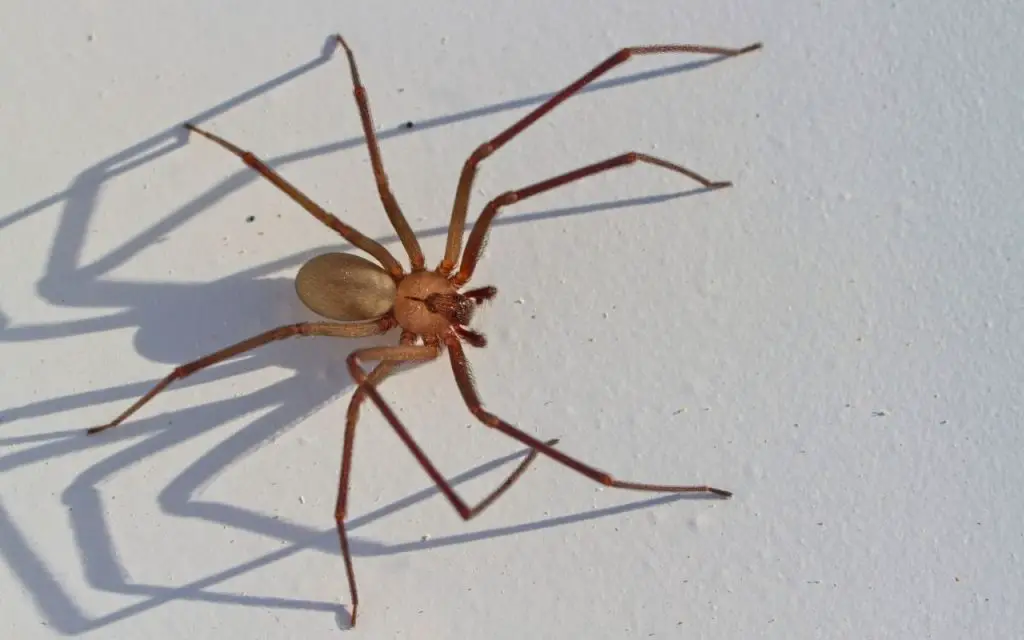
Brown recluse spiders are native to Texas and are characterized by their violin-shaped marking on the back of the body. They are primarily nocturnal and build webs that alert them when prey passes.
In their natural habitat, they feed on insects and hide in rock crevices and cracks. They may also be found camping out on items such as shoes, rubber tires, and tarps.
If a person has been bitten by a brown recluse spider, the bite may cause itching, fever, sweating, and a general sense of sickness and discomfort. Severe cases can result in skin grafts or tissue death and may require antibiotics and pain medication.
The bites of brown recluses can also cause deep scarring. While most people don’t experience any serious symptoms, it’s best to be cautious if you get bitten by a brown recluse spider, because their venom seems to vary according to region.
The brown recluse is an opportunistic nocturnal spider that typically lives in dark areas. They are often found under tire treads or under trash cans. Their life span is about a year, but they can go months without eating.
Their life cycle is short, but they’re known to stay active at night and often enter human habitations. They can easily stay hidden under your clothing if they’re protected from sunlight.
Cardinal jumping spiders
The male cardinal jumping spider is fast and garishly coloured. It lives outside in trees and bushes and hunts for prey with its keen eyesight. The female is similar in appearance but a lighter shade of red, making her almost faded in appearance.
Both sexes prefere to actively hunt for prey during the day rather than build a web like many other spiders. The reason they jump, after all, is to surprise their prey.
Though the Cardinal jumper is only mildly venomous, it can bite if cornered. To protect yourself, don’t handle by grabbing it, just let it walk over your hands if it wants to. It can grow up to 12.5mm in length.
Its dorsal body and legs are almost black, contrasting with the body. They are native to North America and South America and live in both temperate and tropical climates.
Trapdoor spiders
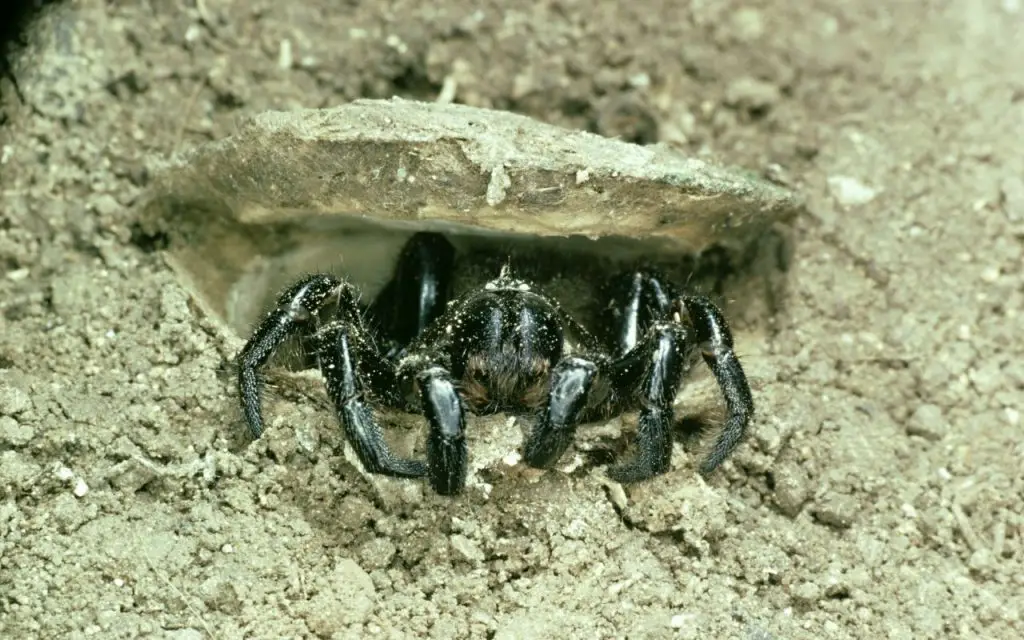
These creatures spend most of their lives in underground burrows, but are known to be flushed out by heavy rains. When disturbed, male trapdoor spiders may wander in search of females.
Though trapdoor spiders are not known to bite humans, they can be aggressive to one another. In Texas, there are also Tarantula species, like the Texas Brown, which are in fact close relatives of Trapdoor spiders.
Although there are venomous species of spiders in Texas, only the black widow and the brown recluse have venom that can cause a serious medical problem.
The rest are harmless or can only cause minor tissue necrosis. Fortunately, trapdoor spiders do not tend to bite people, anyway. The likelihood of being bitten by one is extremely low unless you try to handle it.
A black Texas spider, the trapdoor spider is often mistaken for a tarantula. Although it shares many similarities, the trapdoor spider has hairy legs and a smoother body.
While trapdoor spider bites may be painful, they are unlikely to cause harm to humans. If you live in the south, you’ll probably encounter this species frequently. They are common in Texas and can be found all over the state.

